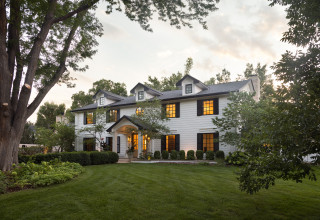
This article was originally published by a www.houzz.com . Read the Original article here. .

This article was originally published by a www.houzz.com . Read the Original article here. .
Thompson ConstructionSave PhotoLindberg’s office is also on the first floor, just off the foyer. Petite and pretty, it has a built-in white oak desk…
Hollyman DesignSave Photo5. Forgetting About FunctionWhen planning your remodel, make sure you put your kitchen’s busiest areas — the sink, stove and fridge —…
Thompson ConstructionSave PhotoLindberg’s office is also on the first floor, just off the foyer. Petite and pretty, it has a built-in white oak desk…
Blue Bear Landscape ConstructionSave Photo4. Recycled OptionsReusing materials that have proven they can handle difficult conditions — such as stone, concrete and brick —combines…
In other bath layouts, the tub may be opposite the sink and toilet, as shown here. The International Residential Code (IRC) requires a minimum…
Airehart Construction, Inc.Save Photo“Uh-oh” moment. “During the installation of the zellige tile backsplash, the design process hit a significant snag,” contractor Brian Airehart says.…
This New England couple bought their Grand Cape-style house knowing they’d eventually remodel the dated kitchen. The parents of three daughters thought the overall…
This dreamy property in the coastal mountains south of San Francisco already had a pool, lawn areas, gardens and mature trees, including a large…
1. You’ll Save Time
You may not know how structural choices can impact the installation of the mechanical system. Or about options for new materials or technologies that might be cheaper, better or more appropriate than what you are familiar with. Figuring those things out takes time, and lots of it. A skilled professional will have this information at the ready for you.
Plus, with advances in technology, new building envelope techniques are coming on the market with increasing frequency, and new, tougher energy-efficiency requirements are transforming how walls are constructed and bringing an end to many traditional building practices. So it’s more crucial than ever to have someone on your team who understands how your building assembly meets current building code requirements.
These codes are typically complex texts that are difficult for those outside the building industry to understand. When designers submit drawings to the building authority, a plans examiner reviews them and issues a revision notice to address any variances from the current codes and construction standards.
A well-informed designer with up-to-date knowledge of building science can get building projects through with the minimum number of revisions. Since each revision takes time to be completed, having fewer revisions will allow you to get your permit faster. Low-quality or incomplete documents can delay your construction. Hiring a designer will help ensure that your project meets relevant codes so it can progress smoothly through your municipality’s process.
This could save you many sleepless nights and potentially weeks on your project trying to determine what is needed to satisfy the code requirements.
Find an architect near you